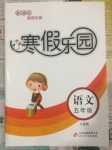题目内容

Chinese Fancy Knots
Chinese Fancy Knot
Chinese fancy knots, also called Chinese knots, refer to the traditional decorative knots in Chinese culture. They began as a form of traditional art in the Tang and Song Dynasties in China, and became popular in the Ming Dynasty. Long ago, they found their way to Japan and other Southeast Asian countries, and were well received there. Now they are taken as one of the most classic symbols (标志) of Chinese culture.
As for the name itself, it is surely meaningful. The Chinese word for “knot”, jie, means “connection”. It is related to lots of cultural ideas – marriage, brotherhood, reunion, etc. Meanwhile, the pronunciation of the Chinese word jie is very close to that of ji, “good luck”. As a result, Chinese knots perfectly serve as a way to express people’s strong wishes for good things like joy, love and good luck.
Besides, the knots, widely existing in the everyday life of the Chinese culture, come in different sizes. Small ones are connected to jewellery (珠宝), clothes, gift-packages and furniture in order to attract people’s attention, while large ones are used to decorate a living room or study. Whether large or small, there are over a dozen basic knot patterns ( 图 案 ), named according to their shapes, usages or origins. For example, Double Coin Knots are called shuangqian Jie because they are in the shape of two ancient Chinese coins, meaning “good things come in pairs”. However, almost all the main styles of Chinese fancy knots are made up of two exactly similar parts, and the patterns on the front and the back sides are also similar in every detail.
In addition, Chinese knots are famous for their bright colours. Each of the Chinese knots is made of a single string of cotton, silk, gold or silver. But the colours of the strings are rich and have different traditional cultural meanings. Among the most commonly used base colours, red means good luck and happiness, green means health, and yellow, which was once known as a emperor’s colour, may means wealth and honour.
In brief, the famous Chinese fancy knots fully reflect (反映) the depth of Chinese culture. These brightly coloured knots of different patterns, with their endless chains of knots, mean that life on earth will continue forever.
1.When did Chinese fancy knots become popular?
_______________________________________________________________________
2.What does the Chinese character for “knot” mean?
_______________________________________________________________________
3.Why do people express strong wishes with Chinese knots?
_______________________________________________________________________
4.What are the main points about Chinese knots in Paragraph 3?
_______________________________________________________________________
5.What do Chinese fancy knots fully reflect?
_______________________________________________________________________
 寒假乐园北京教育出版社系列答案
寒假乐园北京教育出版社系列答案My Dream Job
Carla, 12 When I leave school, I want a job that's interesting and enjoyable. I enjoy helping other people. My friends say I'm good at talking to people. I'm also good at mending things and I am not afraid of blood. I think I would like to work in a hospital. By the way, my favorite subject is biology. |
Melissa, 13 I like to help people too but I don't want to work in a hospital. I'd like to work with kids or teenagers, because it is boring to work with adults all day. I'm very patient and I'm good at listening to people. I'm also good at helping my classmates with their homework. My favorite subject is English and I'd like to work in a school. |
Diego, 15 I don't want an ordinary job. I want to have an exciting job. I enjoy travelling around the world. I'm very adventurous. I'd like to meet different people every day. I'm good at physics. It's my favorite subject. I can speak English, Spanish and German. I like to work on an airplane. |
Mark, 14 I don't want an ordinary job, either. I think working in an office is boring. I'd like to be famous. I love to be in front of a crowd. I'm an outgoing person. My favorite subjects are drama and computer. I'm really good at acting. I was in the school play last year. It was excellent! I'd like to work on the stage(舞台). |
1.Melissa is ____________ years old.
A.12 B.13 C.14 D.15
2.Diego's favorite subject is ___________________.
A.biology B.English C.physics D.computer
3.Mark would like to work _________________.
A.in a hospital B.in a school
C.on an airplane D.on the stage
Nowadays more and more people like animals and _______ one or more as Pets.
A.get B.let C.keep D.take
Every spring, the cherry trees in Washington, DC take bloom(花), beginning one of the country’s loveliest celebrations, the National Cherry Blossom Festival (March 17-April 15). Book your trip now to see this lively display of pink and white in this city full of history!
Washington, DC Cherry Blossom In-Depth tour
Price: $45
Available: Mar 25- Apr 15
Period: 1Day
Highlights: Visit Washington, DC; experience the peak(高峰) period of cherry blossom (April 8-12)
Route: Guests would start to celebrate the National Cherry Blossom Festival and discover the beauty of cherry blossoms. Next, we will begin our sightseeing city tour including Lincoln Memorial, White House, US Capitol, Madam Tussauds Wax Museum, Washington Monument and International Spy Museum. Then visit the Jefferson Memorial, the best location to view the cherry blossoms. Finally, guests may board a Potomac River cruise to see the city from the water. Then tour ends.
Price Include: Ground Transportation
Service fee for the tour guide: $10/person
Admission Fees(入场费):
Destination(目的地) | Adult | Child | Senior |
International Spy Museum (Optional) | $21.95 | $14.95 (3-12 yrs) | $19.95 (Over 65 yrs) |
Madame Tussauds Wax Museum (Optional) | $23 | $17 (3-12 yrs) | $20 (Over 65 yrs) |
Potomac River Cruise (Optional) | $26 | $18 (3-12 yrs) | $23 (Over 65 yrs) |
Note: if you would like to join in the optional(可选择的) activities, please pay the fee in cash(现金) to the tour guide. You cannot buy the tickets on your own or use City Passes. The tour guide will arrange the tickets for the group.
1.On March 25, tourists can enjoy ______.
A.the cherry blossoms in full bloom B.the anniversary celebration of the gift of trees
C.a discounted tour of a city foil of history D.the National Cherry Blossom Festival
2.The tour covers ______ tourist spots without admission fees.
A.four B.five C.seven D.eight
3.Tourists are supposed to ______.
A.pay the service fee for the tour guide B.take care of the ground transportation
C.show the City Pass at the ticket office D.choose at least one optional destination
4.It costs ______ for you and your grandpa (aged 67) to go on the tour, with the wax museum included.
A.$156 B.$143 C.$153 D.$108
Texting(发信息) while driving is against the law in 47 states. But what about texting while walking? A 2018 study reported that more than 2, 500 people in the US ended up in hospitals resulting from using a mobile device(设备) while walking.
Hawaii passed a law making it illegal(违法的) to text or look down at a mobile device while crossing the street, it is the first state with a law like this. Do people think more places should accept such a law? The LA Times did a survey. Here are some replies they received.
Rena Jose, 26, New York Which is more important, texting or safety? If you are looking at your phone while walking, you might not see a car come or traffic lights turn red. It can be very dangerous. For example, in Japan, one person fell into a lake and another got her leg stuck in a hole, because both had their mind on their phone. We should make texting while crossing the street illegal in more cities. |
Andy Selvam, 55, California People do many things that cause injury to themselves but are not illegal, such as climbing mountains, driving cars, swimming and so on. People might get hurt from texting and walking if they're not paying attention. But I still think they should have a choice. |
Bob Madigan, 45, Oregon As humans, we can make our own decisions. I'm not saying it's safe, but we don't need the government to babysit us. If we want to learn to make smart decisions, the government needs to stop telling us what to do. After all, this is a free country. |
Andrew Black, 34, Alaska This law is a good idea—compare this protection with seat belts. If this law is passed all over the USA, people will be worried. But is there really a way to please everyone? This would not be for fun. It would be safe and good for all Americans. |
1.The LA Times did the survey most probably to ________.
A.win the hearts of more readers
B.encourage more states to pass the law
C.ask readers if they agree with texting while driving
D.learn about people's opinions on texting while walking
2.In Rena's reply, she showed the danger of texting while walking by ________.
A.using numbers B.giving examples C.asking questions D.telling stories
3.Which of the following is Andrew Black's opinion?
A.Texting is more important than safety. B.The law would help to keep Americans safe.
C.It's easy to please everyone when passing a law. D.Whether to text or not while walking is people's own choice.





